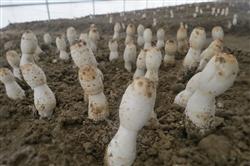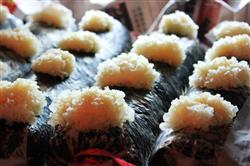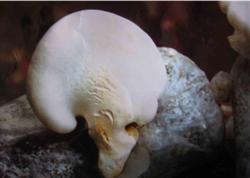What is Coprinus comatus and how to grow and manage it?

What is Coprinus comatus and how to grow and manage it? Please introduce Coprinus comatus, also known as Maotou Ghost Umbrella, which belongs to the subphylum Basidiomycetes of Fungi. Coprinus comatus meat is tender, delicious and delicious. According to the analysis, fresh mushrooms contain 92.2% moisture; every 100 grams of dried mushrooms contain 25.4 grams of crude protein, 3.3 grams of fat, 58.8 grams of total sugar, 7.3 grams of fiber and 12.5 grams of ash; and Coprinus comatus also contains 20 amino acids (including 8 essential amino acids). Coprinus comatus is a kind of medicinal fungus. Taste sweet and smooth flat, beneficial to the spleen and stomach, clear the heart and calm the mind, the treatment of hemorrhoids and other effects. Regular consumption can help digestion, increase appetite and treat hemorrhoids. According to the Atlas of Chinese Medicinal Fungi, the inhibition rates of hot water extract of Coprinus comatus on sarcoma 180 and Ehrlich in mice were 100% and 90%, respectively. According to Aston University, Coprinus comatus contains effective ingredients to treat diabetes. In recent years, Coprinus comatus has been successfully cultivated in the United States, the Netherlands, France, Germany, Italy and Japan. Fresh mushrooms, dried mushrooms (sliced mushrooms) and canned mushrooms are popular. Second, Coprinus comatus cultivation techniques 1, formula cotton husk 85%, wheat bran 10%, calcium magnesium phosphate fertilizer 2%, lime 3%, water content 65%. 2. Bagging and sterilization, mix the raw and auxiliary materials well, put them into a 17 × 33 cm low pressure polyethylene bag, tie up the mouth of the bag, sterilize in 100 ℃ steam for 8-10 hours, wait for natural cooling to about 60 ℃ out of the oven, move into the inoculation room. 3. Inoculation and cultivation can be carried out when the culture material is less than 30 ℃. Each bottle of original seed can receive about 40 bags, and after inoculation, it can be transferred to the culture room, the wall can be stacked with 4-5 layers, and the temperature can be controlled for 22-28 ℃. The environment of the culture room should be kept clean and dry. Usually the hyphae grow all over the bag in 35-40 days. 4. After taking off the bag and covering the soil mycelium, the bag is placed on a mushroom bed about 1 meter wide, and the distance between the sticks is about 5 cm. Then fill the rotten vegetable garden soil adjusted by lime water between the sticks, pour it through with 0.5% lime water, and then cover the soil with a thickness of 3-4 cm. Divert the water to 18-20% of the water in the overlying soil layer. 5. The management of mushroom production and covering soil for about 10 days, the hyphae climbed to the middle and upper part of the overlying soil layer, and the ventilation was strengthened after spraying heavy water at this time to promote the formation of fruiting body. If the hyphae climb to the surface of the soil layer, it should be covered with fine soil particles. 6. when the fruiting body of Coprinus comatus on the market is opened, the bacterial folds turn brown and black, and then the cap begins to autolysis and loses its commercial value, so Coprinus comatus is different from other mushrooms. Commercial and high-quality mushrooms are required to be harvested immediately when they are 3-4 mature, listed or processed in time. Pleurotus ostreatus against diseases and insect pests 1. Walnut fleshy bacteria (also known as false fungus) is a malignant infectious disease easy to occur in the cultivation of Coprinus comatus. At the initial stage of the disease, dense white cotton hyphae were produced in the overlying soil layer. Then the fruiting bodies of different sizes similar to auricularia auricula occurred on the surface of the soil, and the culture material for digging and developing the diseased parts would emit a strong smell of bleaching powder, the silk of Coprinus comatus autolyzed and the culture material blackened. Prevention and control methods: ① strictly selects bacteria, and insists on not using those strains that are found to be in doubt. ② covering soil must be taken below 20cm and strictly sterilized. ③ is partially irrigated with thick lime water, and the water supply is stopped. after the local soil turns white, carefully move it out away from deep burial. 2. White gypsum mold is a disease caused by acid in culture material. It generally occurs within 15 days after seeding, and white patches of different sizes are formed on the covered surface in the initial stage, such as lime powder. When it is ripe, the plaque turns pink and yellow powdery spore clusters can be seen. Digging up the culture material has a strong stench, and the hyphae of Coprinus comatus die and rot. Control method: 5% lime powder was added when ① culture material was fermented, and the pH value was adjusted to 8.l5. ② was locally sprayed with 500x carbendazim or 5% carbendazim. ③ strengthens the ventilation and reduces the air humidity of the border. 3. The spores were mixed into the human mushroom bed in the raw materials such as rice straw, and a large number of Umbrella fungus competed with Coprinus comatus for nutrition in 5-10 days. After the fruiting body decomposed, the ink-like spore fluid was released, and the subculture was very fast. Control method: ① uses fresh and dry rice straw as culture material and takes two times of fermentation to kill the spores. ② found that Umbrella should be removed before opening the umbrella and buried deeply. Pest 1. There are many species of mites, which mainly harm hyphae and fruiting bodies. When the population density is high, Coprinus comatus can not form fruiting bodies. Mites come from rice straw and livestock droppings, like to live in a dark and humid environment, and multiply very fast. Control methods: the ① cultivation site should be carefully cleaned up before use, and be sprayed with dichlorvos once. When the fermentation temperature of ② reached 55 ℃, 2000 times of propargite was sprayed on the surface of the stack. ③ mushroom farm regularly sprayed 1000 times dichlorvos or 2000 times carotene. 2. Mushroom fly not only harms the fruiting body of Coprinus comatus, but also is the culprit for the transmission of miscellaneous bacteria. The harmed culture material is in the shape of bran and has a foul smell, and maggots crawl and hyphae are eaten. Control method: ① sprays the ground and all around with 0.1% ivy essence. ② was sprayed with 1500 times pyrethrum or 3000 times 2.5% cypermethrin. ③ keeps the site ventilated and clean. 3. The jumping beetle is an index pest with too humid cultivation environment and poor sanitary conditions. Often clustered in the bacterial film and material at the bottom of the cap, the victim's fruiting body turns red and flows out of mucus, losing its commercial value. Control methods: ① improves the sanitary conditions of the cultivation site to prevent stagnant water and excessive dampness. ② was sprayed with 0.1% rotenin or pyrethroid. Click for more Coprinus comatus planting techniques click to get more edible mushroom planting techniques
- Prev

How to cultivate Tremella fuciformis with sawdust?
How to cultivate Tremella fuciformis with sawdust? Please introduce the cultivation methods of Tremella fuciformis with sawdust cultivation can refer to the following methods: 1. Materials should be prepared with broad-leaved poplar, French sycamore, plum, persimmon and other sawdust. Sawdust powder should be crushed like rice bran. Do not use trees that contain germicidal substances such as aromatic oils. 2. The medium formula of Tremella fuciformis.
- Next

Why is Bailing mushroom deformed?
Why is Bailing mushroom deformed? Please introduce the reasons why the malformation of Pleurotus ostreatus leads to the reduction of the grade of the products, and some even lose the commercial value, which seriously affects the economic benefits of the growers. The main reason for the emergence of deformed Pleurotus ostreatus is that the external culture conditions do not meet the growth requirements of Pleurotus ostreatus. ...
Related
- Fuxing push coffee new agricultural production and marketing class: lack of small-scale processing plants
- Jujube rice field leisure farm deep ploughing Yilan for five years to create a space for organic food and play
- Nongyu Farm-A trial of organic papaya for brave women with advanced technology
- Four points for attention in the prevention and control of diseases and insect pests of edible fungi
- How to add nutrient solution to Edible Fungi
- Is there any good way to control edible fungus mites?
- Open Inoculation Technology of Edible Fungi
- Is there any clever way to use fertilizer for edible fungus in winter?
- What agents are used to kill the pathogens of edible fungi in the mushroom shed?
- Rapid drying of Edible Fungi

